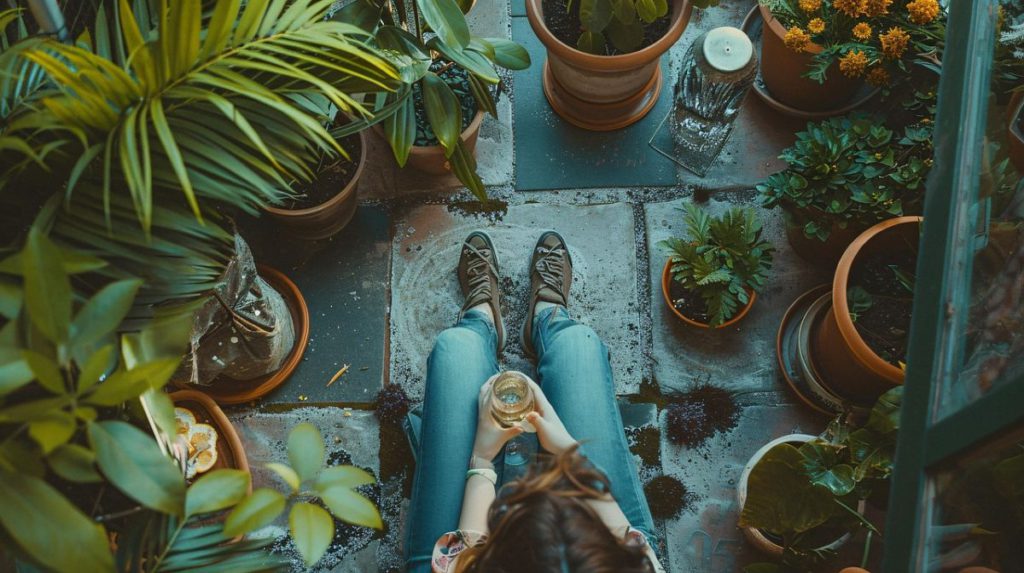Stepping Into the World Around You
Walking into a space can be transformative. Imagine entering a boutique, where the air carries a calm, inviting sense, much like stepping into a quaint cigar shop, carefully organised to feel welcoming. You notice a display that resembles a cigar humidor, its polished wood and glass suggesting attention to detail, and you sense the care put into maintaining the environment. Every corner feels deliberate, the lighting gentle, and the temperature just right, all creating a subtle atmosphere that shifts your mood. The environment speaks to you without words, shaping how you experience the place and influencing how long you linger or how comfortable you feel. Spaces like these remind us that even small design choices can leave a lasting impression.
How Surroundings Shape Our Daily Life
Step outside and notice the change when sunlight streams through the trees on a cool morning. The air feels crisp, sounds carry differently, and your energy seems to adjust naturally. Small changes, like a breeze through an open window or sunlight warming a spot on the floor, can influence how you move, think, and interact with others. Invisible cues in the environment constantly guide reactions without us realising it, showing that life is lived not just in a space, but through it. Even the smell of fresh grass or the softness of a shaded path can subtly alter how we feel.
Designing Spaces That Feel Right
Even simple rooms show how atmosphere matters. High ceilings, natural light, and soft textures create openness and calm. Spaces that are dim or cramped can make people restless or anxious. Environments intentionally arranged encourage lingering, connection, and creativity. Conversely, mismatched conditions can make us shift uncomfortably or look for an escape. The temperature, lighting, and layout subtly influence our moods and choices. Thoughtful design ensures that a space not only functions but also resonates with those who inhabit it.
The Sound of Environment
Sound is another invisible factor shaping life. The gentle hum of a café or the rustle of leaves in a park can affect your mood without being obvious. Some spaces encourage conversation, while others invite silence. Even when unnoticed, sound interacts with our perception, reinforcing a feeling of comfort or tension. Urban noise, birdsong, or distant water can all play a role, creating subtle shifts in attention and energy. The combination of quiet and sound helps define how we experience the same space at different times.
Air, Light, and Comfort
Humidity, temperature, and air quality are powerful yet often overlooked influencers. Spaces that are too dry, damp, warm, or cold can shift energy and mood. When balanced, these factors create comfort, focus, and productivity. Humans evolved to respond to environmental cues, which guide behaviour and emotional responses. Atmosphere doesn’t just exist; it actively shapes how we move through life. Even minor adjustments like opening a window or adjusting lighting can change perception and encourage a sense of ease.
Materials, Colours, and Human Response
Designers and architects understand the impact of surroundings, selecting materials, colours, and layouts that foster well-being. Warm wood, cool stone, and transparent glass aren’t only aesthetic choices they subtly affect perception and emotion. Even textures influence comfort and calm. The environment isn’t just a container for life; it participates in shaping experiences, and the materials we surround ourselves with can influence daily mood far more than we might think.
Neighbourhoods and Community Spaces
At a larger scale, community design demonstrates the power of the environment. Tree-lined streets, open parks, and thoughtfully planned public spaces enhance happiness and health. Conversely, noisy, dense, or poorly ventilated areas can increase stress. Well-planned environments encourage walking, connection, and ease. The invisible hand of surroundings guides social behaviour, interactions, and overall quality of life. Small design elements like benches, water features, or shade trees can make public areas inviting, fostering longer visits and spontaneous interactions.
Personal Spaces and Micro-Adjustments
Even small changes at home or work make a difference. Adjusting light to mimic natural rhythms, opening a window to let in fresh air, or rearranging furniture for flow can shift how a space feels. Attention to atmosphere creates dynamic, responsive environments rather than static, confining ones. Every element, from air to light to layout, quietly shapes daily life. Even the choice of colours for walls, the placement of objects, and soft textures can subtly influence relaxation and focus, creating spaces that feel truly alive.
The Psychological Layer
Spaces that feel cared for, clean, and organised foster calm and order. Cluttered or neglected environments can cause distraction or stress. People respond emotionally to their surroundings without always realising it. Invisible atmospheric influences shape cognition and mood in subtle but real ways. When we pay attention to these cues, we can transform our environment into a supportive partner for mental clarity and well-being.
Nature and the Outdoors
Interaction with outdoor environments reinforces these effects. Parks, riversides, gardens, and open plazas relieve confinement and stimulate positive feelings. Trees, sunlight, and water engage our senses naturally. Even a small garden or a few potted plants on a balcony can influence mood and perception. Life is inseparable from the environment, and these interactions remind us that the atmosphere constantly guides experience, whether in urban or rural settings.
Tuning Into Your Environment
It’s easy to underestimate the power of atmosphere. We may not notice how lighting encourages focus, fresh air brings renewal, or gentle background sounds reduce tension. Yet small environmental details accumulate, guiding mood, energy, and creativity. Recognising these influences allows us to adjust our surroundings intentionally to support well-being and productivity. Awareness of subtle environmental cues is the first step in creating spaces that feel aligned with personal needs.
Partnering With Life’s Invisible Guide
Becoming aware of environmental impact helps us make choices aligned with our needs and priorities. Spaces can encourage focus, creativity, relaxation, or connection. Light, temperature, texture, sound, and layout combine to guide behaviour, mood, and energy. Life improves when we treat the environment as a partner, quietly supporting daily living. Thoughtful attention to surroundings allows spaces to enhance life rather than serve as a backdrop.
The Subtle Force That Shapes Life
Atmosphere is everywhere, from natural landscapes to interior spaces. It shapes experiences, influences behaviour, and colours perception. Paying attention to these subtle forces transforms environments into partners, supporting, inspiring, and sustaining life. The invisible cues around us are constant guides, influencing thought, feeling, and movement, reminding us that life and environment are inseparable. Every space, from a garden to a hallway, contributes to the way we experience the world, often without our conscious notice.





